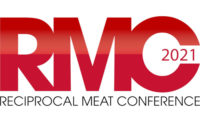Returning to normal, with lessons learned

If, like millions of Americans, you’ve ventured outside within the last few weeks, you’ll notice that the pent-up demand for normalcy has resulted in jam-packed restaurants, full parks and busy stores. Masks are no longer mandatory, and social distancing is a thing of the past. Hopefully, most of the people living it up have been vaccinated and are safe, but at this point, there’s not a lot that can be done to stop the anti-vaxxers from doing what they want.
So are we completely back to normal? In the few plants that I have visited since the country began to open up, I have still seen masks being worn and temperatures being taken. Masks, I have to say, are much more effective than beard nets and help to keep your face a little warmer when walking into or through freezers or coolers. But as we adjust to the “old normal,” I think there are some takeaways that we can keep from the pandemic.
Crowded plant floors aren’t ideal: The sight of workers elbow-to-elbow working on cuts of pork or chicken was a common one, but that had to change. And I think it was a change for the better, even if it cut into efficiency. When you get rid of workers standing inches from each other while working with knives, you can cut down on worker accidents. You create a more comfortable work area, where people can actually breathe. Ask your employees if they prefer a little extra space or go back to the elbow-to-elbow work pattern, and I think you’ll find few people who want to go back to the old ways.
This could have been an email: Face-to-face meetings can be really helpful, especially in a plant environments. Most places I visit have a morning meeting where plant managers discuss their needs for the day and the schedule, and that’s great. But I’m sure we discovered that some meetings can be replaced by a group email, with no harm done. Meetings held just for the sake of having meetings should be evaluated.
Value your employees: The meat industry never shut down. Companies who could pivot quickly adjusted their production environment, their product output and their customer bases to survive, and even thrive, in 2020. Business leaders had the foresight to make those changes, but the hourly employees were the ones that put the plan into action. Hopefully, you have expressed your appreciation for their work, both vocally and financially, if possible. The companies who took care of their people during the pandemic instilled loyalty and dedication to them. The ones who treated employees as disposable resources have a black eye that will take a long time to dissipate.
Fix the food chain: The United States has the most efficient food supply in the country, but the pandemic showed that it can’t stand up to a severe pressure like a pandemic. Not only is there room for smaller processors and slaughterhouses in the meat industry, there is a necessity for them. Fortunately, there have been state and federal funds available to help small processors expand or open new operations. Establishing a supply chain of smaller producers and processors can help avoid any future shortages and can help strengthen small communities as well.
Hopefully, we never have another year like we did in 2020. But it’s not something that should be forgotten. The meat industry can learn from it to ensure even more success in the future.
Sam Gazdziak
gazdziaks@bnpmedia.com
Looking for a reprint of this article?
From high-res PDFs to custom plaques, order your copy today!







